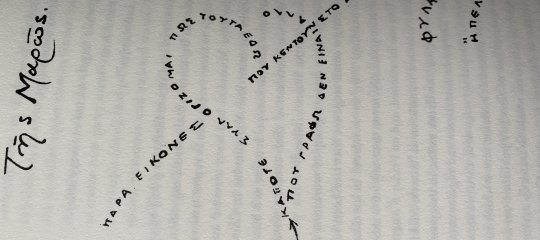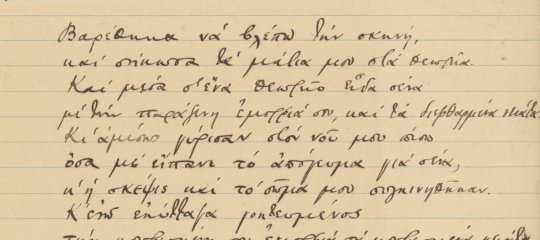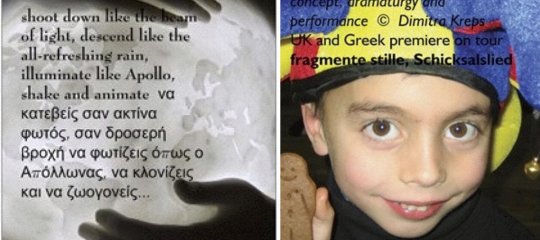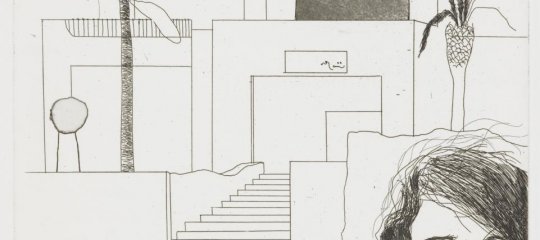Ιταλική ρεβεράντζα στον Παρθενώνα (ΚΑΘΗΜΕΡΙΝΗ 2/10/09, της Γιώτας Συκκά)
Αγγελική Βασιλοπούλου,Παλέρμο
Με αφορμή του άρθρου με τίτλο "Ιταλική ρεβεράντζα στον Παρθενώνα" της Γιώτας Συκκά που δημοσιεύτηκε στην εφημερίδα ΚΑΘΗΜΕΡΙΝΗ στις 2/10/09, το άρθρο εδόθη στους φοιτητές του 3ου έτους των Ξένων Γλωσσών.Ακολούθησε σχετική συζήτηση για τον επαναπατρισμό όχι μόνο των ελληνικών αρχαιοτήτων στη χώρα τους από διάφορα μουσεία του κόσμου, αλλά και των ιταλικών αρχαιοτήτων.
![]() Σημαντική και συμβολική χειρονομία η επιστροφή θραυσμάτων από τα μουσεία Παλέρμου και Βατικανού
Σημαντική και συμβολική χειρονομία η επιστροφή θραυσμάτων από τα μουσεία Παλέρμου και Βατικανού
Της Γιωτας Συκκα
ΔΙΠΛΩΜΑΤΙΑ. Αν κάτι χαρακτήρισε πολιτιστικά τη Ν.Δ., από την εποχή του Π. Τατούλη στο υπουργείο Πολιτισμού και την υπόθεση Γκετί, μέχρι τον Γ. Βουλγαράκη και τον Μ. Λιάπη ήταν οι αλλεπάλληλες επιστροφές αρχαιοτήτων. Ακόμη και τώρα λίγα 24ωρα πριν ανοίξουν οι κάλπες οι επαναπατρισμοί συνεχίζονται. Ο Αντώνης Σαμαράς φρόντισε να κλείσει τον φάκελο Ιταλία, εξασφαλίζοντας την επιστροφή τριών θραυσμάτων από τη γείτονα χώρα.
Το επιβεβαίωσε στην «Κ» ο καθηγητής Λουί Γκοντάρ, σύμβουλος του προέδρου της Ιταλικής Δημοκρατίας Τζόρζιο Ναπολιτάνο, τονίζοντας πως αυτό ήταν το αντικείμενο της συζήτησης που είχε προχθές με τον Αρχιεπίσκοπο της Καθολικής Εκκλησίας Τζιανφράνκο Ραβάζι.
Δύο από τις αρχαιότητες είναι υποθέσεις γνωστές στο ΥΠΠΟ. Πρόκειται για θραύσμα από το γλυπτό διάκοσμο του Παρθενώνα από το μουσείο Salinas του Παλέρμο, το οποίο βρίσκεται στο νέο Μουσείο της Ακρόπολης υπό τη μορφή προσωρινού δανεισμού. Επρεπε, όπως προέβλεπε η αρχική συμφωνία, να επιστρέψει στην Ιταλία τέλος Μαΐου αλλά παρέμεινε στη χώρα μας για τα εγκαίνια του Μουσείου.
Τα άλλα δύο που ανήκουν στο Βατικανό είναι το κομμάτι από τον ανάγλυφο διάκοσμο του Παρθενώνα στο οποίο εικονίζεται κεφαλή ανδρός και μέρος τμήματος της υποβασταζόμενης σκάφης. Προέρχεται από τη βόρεια ζωφόρο, ανήκει στο Μουσείο Ετρούσκι του Βατικανού και θαυμάσαμε στον τρίτο όροφο του νέο Μουσείου της Ακρόπολης. Ολα δείχνουν πως η ιταλική πλευρά είναι έτοιμη να το δώσει στη χώρα μας.
Το θραύσμα ήρθε στην κατοχή του πρόξενου της Αγγλίας στη Σικελία στις αρχές του 19ου αι. Μαζί και τμήμα γενειοφόρου κεφαλής ανδρικής μορφής, από τη νότια μετόπη 16. Το 1804 τα γλυπτά δωρήθηκαν στον Πάπα και έκτοτε παραμένουν στο Βατικανό.
Οι πρώτες απόπειρες
Τη δεκαετία του ’90 ξεκίνησαν οι πρώτες απόπειρες της Ελλάδας για την επιστροφή τους. Εντάθηκαν το 1997, ο μακαριστός Χριστόδουλος συνέβαλε κι αυτός για τον επαναπατρισμό τους μεταφέροντας το αίτημα στη διάρκεια συνάντησής του με τον Πάπα Βενέδικτο, συνέχισε το 2008 ο Μ. Λιάπης, ενώ όπως μας διαβεβαιώνει τώρα η ιταλική πλευρά, ο Αντ. Σαμαράς έκλεισε τον κύκλο των διαπραγματεύσεων.
«Για την επιστροφή τους συζητήσαμε μαζί του πολλές φορές. Για το αρχαίο από το Παλέρμο που βρίσκεται στο νέο Μουσείο της Ακρόπολης έχουμε ένα δάνειο που επιτρέπει την παραμονή του ακόμη 60 ημέρες», λέει στην «Κ» ο Λουί Γκοντάρ. Οσο για την τύχη των δύο αρχαιοτήτων από το Βατικανό (το ένα βρίσκεται επίσης προσωρινά στην Αθήνα), το θέμα τους απασχόλησε τη συνάντηση που είχε με τον Αρχιεπίσκοπο Ραβάζι ο κ. Γκοντάρ. Παρούσα εκ μέρους του ΥΠΠΟ ήταν κ. Ελενα Κόρκα. «Ο κ. Ραβάζι μου είπε ότι έχει λάβει επιστολή του κ. Σαμαρά για το θέμα, ότι τον βρίσκει απόλυτα σύμφωνο ο επαναπατρισμός των αρχαίων και ελπίζει ότι σύντομα θα επιστρέψουν στη χώρα σας αυτά τα δύο κομμάτια από το Μουσείο του Βατικανού. Ο Αρχιεπίσκοπος μας τόνισε ακόμη ότι οι σχέσεις μεταξύ Ελλάδας και Βατικανού είναι πολύ καλές και ελπίζει να γίνει μια συμφωνία όχι μόνο για τον οριστική επιστροφή των αρχαιοτήτων, αλλά γενικότερα για θέματα πολιτισμού».
Γοητευμένος από το μουσείο
Οπως μας εξήγησε ο κ. Λ. Γκοντάρ, στην απόφαση του Αρχιεπισκόπου Ραβάζι έπαιξε ρόλο και το Μουσείο της Ακρόπολης. «Ενθουσιάστηκε όταν το είδε από κοντά στα εγκαίνια και γι’ αυτό υποστηρίζει πως δεν υπάρχει λόγος αυτά τα θραύσματα να βρίσκονται μακριά από τον Παρθενώνα. Μου τόνισε ακόμη πως τόσο ο ίδιος όσο και ο Πάπας θέλουν να έχει το Βατικανό τις καλύτερες σχέσεις με το ελληνικό κράτος». Τις τρεις αρχαιότητες βέβαια θα κληθεί να παραλάβει ο νέος υπουργός Πολιτισμού μετά τις εκλογές κι εφόσον ολοκληρωθούν και οι τυπικές διαδικασίες μεταξύ των δύο πλευρών. Εχει σημασία όμως ότι όλες αυτές οι ενέργειες δημιουργούν το κατάλληλο έδαφος για τη συνέχιση των διαπραγματεύσεων μεταξύ Ελλάδας και Μ. Βρετανίας, ισχυροποιώντας το αίτημα για την επιστροφή των γλυπτών του Παρθενώνα που σίγουρα θα υποστηρίζει η νέα κυβέρνηση, όποια κι αν είναι. Θραύσματα από τη ζωφόρο του Παρθενώνα θυμίζουμε ακόμη πως βρίσκονται και στο Παρίσι, τη Βιέννη, την Κοπεγχάγη, το Μόναχο, το Βίρτσμπουργκ.
- Εισέλθετε στο σύστημα για να υποβάλετε σχόλια










